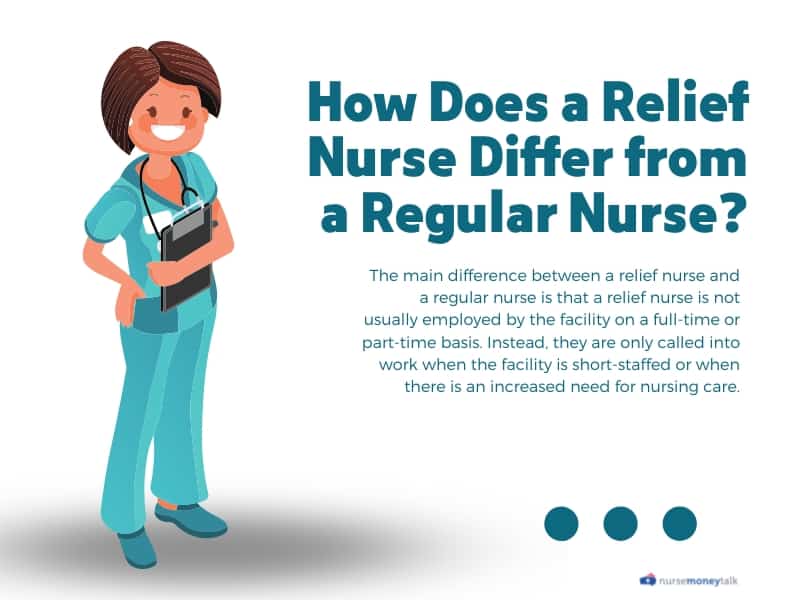You may have heard of relief nurses but are unsure of what they do or how they differ from staff nurses.
In this article, I’ll go over what a relief nurse is and why they can be very beneficial to a unit.
What is a Relief Nurse?
A relief nurse is a nurse (RNs or LPNs) who works on an as-needed basis. Relief nurses are often used to fill in for full-time nurses who are out on maternity leave, sick, or on vacation.
They may also be used to staff additional shifts during busy times. You may also have relief nurses who are mainly used to relieve other nurses for lunch breaks.
How Does a Relief Nurse Differ from a Regular Nurse?

The main difference between a relief nurse and a regular nurse is that a relief nurse is not usually employed by the facility on a full-time or part-time basis.
Instead, they are only called into work when the facility is short-staffed or when there is an increased need for nursing care.
This could be due to a spike in patient admissions, an outbreak of illness, or even just a busy holiday season.
Another difference between relief nurses and regular nurses is that relief nurses often have more experience than regular nurses.
This is usually because relief nurses are supposed to be flexible enough to be thrown into many situations and be able to hit the ground running with less supervision.
What are the Benefits of Being a Relief Nurse?

One of the main benefits of being a relief nurse is that you can choose when and where you work. You can pick up weekend shifts if you only want to work weekends. You can pick up night shifts if you only want to work nights. You can also work at multiple facilities, so you never get bored.
Another benefit of being a relief nurse is that you get to meet new people all the time. Not only will you meet new patients, but you’ll also meet new co-workers with each assignment you take.
Benefits of Having a Relief Nurse
There are many benefits to having a relief nurse on staff. First, it helps to ensure that there is always adequate staffing, even when staff nurses call out sick or take vacation days.
This can help to prevent burnout among the remaining staff nurses. Additionally, relief nurses can provide fresh perspectives and new ideas, which can benefit patient care.
How to Become a Relief Nurse

If you’re interested in becoming a relief nurse, the first step is to obtain your registered nursing license.
After getting your nursing license, you’ll need to get about 1 to 2 years of experience, ideally in the nursing specialty you would like to work in. So maybe med-surg or the ICU.
Once you have your RN license and the necessary experience, you can begin applying for relief nursing positions.
Many hospitals and healthcare facilities post open positions on job boards. You can go to our job board to look for open positions.
Key takeaways
If you’re thinking about becoming a nurse, you might want to consider becoming a relief nurse.
Relief nurses are in high demand and can enjoy many benefits, including the freedom to choose when and where they work.
If you’re an experienced nurse who likes variety in your career, then becoming a relief nurse might be the perfect choice for you!
